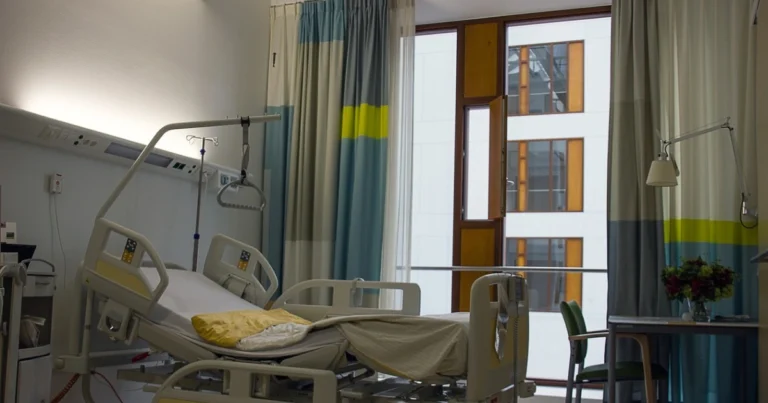Pros and Cons of Laser Treatment for Toenail Fungus: Is It Right for You?
Toenail fungus is a common, yet frustrating problem that affects millions of people in the United States. It causes discoloration, thickening, and brittleness of the nails, often leading to discomfort and embarrassment. While there are several treatments available, laser treatment for toenail fungus has recently gained popularity. In this article, we’ll explore the pros and cons of laser treatment for toenail fungus, helping you make an informed decision about whether it’s the right option for you.
Table of Contents
What Is Toenail Fungus?
Toenail fungus, also known as onychomycosis, is a fungal infection that affects the nails of your toes. It’s typically caused by a fungus that thrives in warm, moist environments. Symptoms of toenail fungus include:
- Thickened nails
- Discoloration (usually yellow or white)
- Brittle or crumbling nails
- A foul odor from the affected nail
- Pain or discomfort while walking
Toenail fungus can be difficult to treat, and traditional treatments often require long periods of use. For this reason, many individuals turn to laser treatment for toenail fungus as an alternative.
What Is Laser Treatment for Toenail Fungus?
Laser treatment for toenail fungus involves the use of a specialized laser that targets the fungus beneath the nail. The laser light penetrates the nail and destroys the fungus, helping to restore the nail to its healthy state over time. This non-invasive procedure is performed in a doctor’s office and typically requires no downtime.
Laser toenail fungus removal is gaining popularity due to its promise of quick and effective results. However, as with any medical treatment, it’s important to weigh the pros and cons of laser treatment for toenail fungus before making a decision.
Pros and Cons of Laser Treatment for Toenail Fungus

Pros of Laser Treatment for Toenail Fungus
There are several benefits to choosing laser fungal nail treatment over traditional options such as oral medications or topical creams. Let’s take a look at the top advantages:
1. Quick and Convenient
One of the biggest benefits of laser treatment for toenail fungus is that it’s a fast procedure. Most sessions take between 20 to 30 minutes, depending on the severity of the infection and the number of nails being treated. There’s no need for lengthy doctor visits or extensive recovery times. You can resume normal activities immediately after treatment.
2. Minimal Pain or Discomfort
Unlike oral medications, which can have side effects, or topical treatments that require constant application, laser treatment for toenail fungus is minimally painful. Most patients report feeling only a slight warming sensation or mild discomfort during the procedure. There is no need for anesthesia, and the laser doesn’t damage healthy tissue, making it a safer alternative.
3. Effective for Severe Cases
For those with severe toenail fungus that hasn’t responded well to traditional treatments, laser therapy may be a more effective option. Studies have shown that laser treatment for toenail fungus can provide long-lasting results, even for individuals with advanced fungal infections.
4. Non-Invasive Treatment Option
Laser toenail fungus removal is non-invasive, meaning no cutting or scraping of the nail is involved. This makes the procedure less risky compared to surgical options and avoids the potential complications associated with surgery.
5. Minimal Risk of Side Effects
While every treatment carries some level of risk, laser treatment for toenail fungus is generally considered safe. The procedure is FDA-approved, and there is a low risk of side effects when performed by a trained professional. Most patients experience no side effects at all, though there may be mild redness or swelling in the treated area for a short time.
6. No Need for Oral Medications
Oral antifungal medications can have side effects such as liver damage, digestive issues, and skin reactions. Laser treatment for toenail fungus, however, avoids these risks because it doesn’t involve taking any medication. If you’re concerned about the potential side effects of oral treatments, laser therapy may be a safer option.
Cons of Laser Treatment for Toenail Fungus
While there are many advantages to laser treatment, it’s also important to consider the cons of laser treatment for toenail fungus. Here are some potential downsides to keep in mind:
1. Costly Treatment
One of the most significant drawbacks of laser toenail fungus removal is the cost. Laser treatments can be expensive, and most insurance plans do not cover the procedure, as it is considered a cosmetic treatment. Depending on your location and the severity of the infection, you could end up paying hundreds of dollars per session.
2. Multiple Sessions May Be Required
In some cases, a single laser treatment may not be enough to fully eliminate the fungal infection. Many patients require two to three sessions to achieve the best results. While this still tends to be quicker than oral medications, it can increase the overall cost and time commitment.
3. Not Always 100% Effective
Although laser treatment for toenail fungus has been shown to be effective for many patients, it’s not a guaranteed cure. Some individuals may not respond well to the treatment, or the fungus could return over time. Results can vary depending on the severity of the infection and other individual factors.
4. Potential for Recurrence
Even if the treatment successfully clears the fungus, there is always a risk of the infection returning. Toenail fungus thrives in warm, moist environments, and if you’re exposed to conditions that encourage fungal growth, you may experience a recurrence. Maintaining good foot hygiene and protecting your nails from fungal exposure is important to prevent reinfection.
5. Not Suitable for Everyone
Laser treatment may not be suitable for everyone. Pregnant women, individuals with certain medical conditions (such as diabetes or poor circulation), or those taking specific medications may not be eligible for the procedure. It’s important to consult with your healthcare provider to determine whether laser treatment for toenail fungus is right for you.
How Does Laser Treatment for Toenail Fungus Work?
Laser treatment for toenail fungus works by using concentrated light energy to target and destroy the fungus underneath the nail. The laser passes through the nail without harming it, and the heat generated by the laser penetrates the nail bed to eradicate the fungal cells.
The process is generally painless and non-invasive. After treatment, the body’s natural healing process works to clear up the infection, and over time, the nail should begin to look healthier. It’s important to note that results may take several months to become fully visible as the nail grows out.
Key Takeaways
- Laser treatment for toenail fungus is a safe and effective method for many people.
- The procedure is quick, minimally painful, and non-invasive.
- Costs can be high, and multiple sessions may be necessary.
- The treatment is not always 100% effective and may require maintenance.
Frequently Asked Questions (FAQs)
Is Laser Effective for Toenail Fungus?
Yes, laser treatment for toenail fungus has been shown to be effective for many patients. However, results can vary, and some individuals may require multiple treatments to achieve the desired outcome.
How Long Does It Take to See Results from Laser Treatment?
Results from laser fungal nail treatment can take several months to become fully visible. This is because toenail fungus can take time to clear, and the nail needs to grow out for the results to be seen.
Does Insurance Cover Laser Treatment for Toenail Fungus?
Most insurance plans do not cover laser toenail fungus removal, as it is considered a cosmetic procedure. You may need to pay out-of-pocket for the treatment.
Are There Any Side Effects?
Laser treatment for toenail fungus is generally safe and has minimal risk of side effects. Some patients may experience mild redness or swelling after treatment, but this typically resolves within a few hours.
How Many Laser Treatments Will I Need?
The number of treatments required varies depending on the severity of the infection. Most patients need 2 to 3 sessions for optimal results.
Conclusion
In conclusion, laser treatment for toenail fungus offers a promising alternative to traditional treatments like oral medications and topical creams. It is quick, non-invasive, and generally safe, making it an appealing option for those looking to clear up a stubborn fungal infection. However, it’s important to weigh the pros and cons of laser treatment for toenail fungus, as it can be costly and may not provide a permanent solution for everyone. Consulting with a healthcare professional is essential to determine if laser treatment is right for you.
Before considering laser treatment, make sure to discuss your options with a doctor who specializes in treating toenail fungus. By doing so, you’ll be able to make an informed decision about the best treatment for your specific situation




